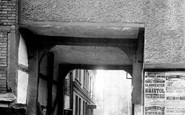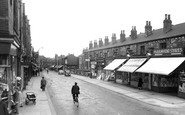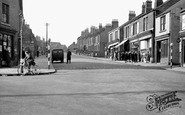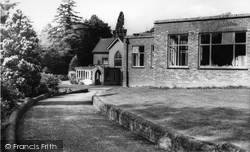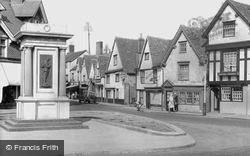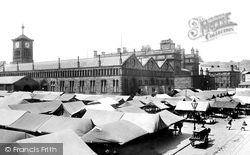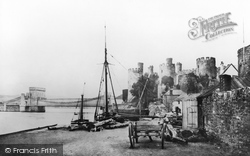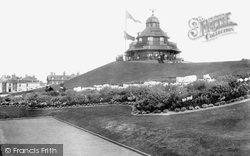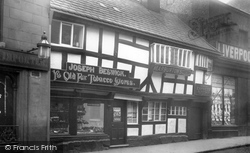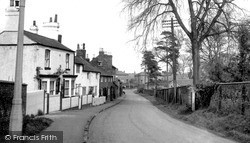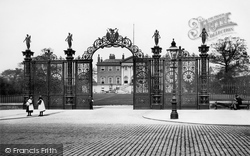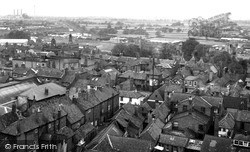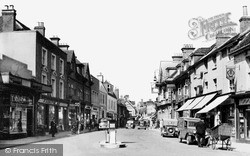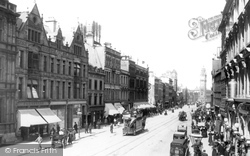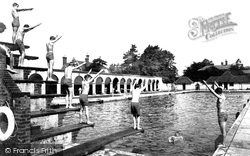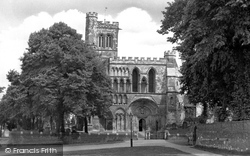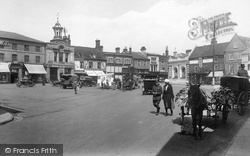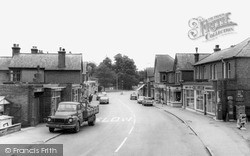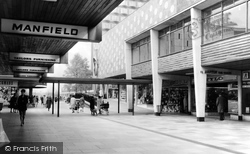Places
4 places found.
Those places high-lighted have photos. All locations may have maps, books and memories.
Photos
115 photos found. Showing results 381 to 115.
Maps
21 maps found.
Books
Sorry, no books were found that related to your search.
Memories
1,091 memories found. Showing results 191 to 200.
Dock Area Life
I was born at 13 Ellor Street, Hankey Park, in 1940 to Sarah and Charles Feeley (snr), the youngest of five siblings: Charlie (jnr) Eileen, Monica and Hannah. In 1941 my father left for the army, and we moved to 46 Brookland St off ...Read more
A memory of Salford in 1940 by
Is This The Lytch Gate In College Street Through To Angel Place
My Grandad lived in 8 College Street Worcester, just opposite the Cathedral. Part of the house was this room that went over the lytch gate and through to the street behind, which I ...Read more
A memory of Worcester in 1950 by
Born On Sutton Flats
I was born on Sutton Flats (now demolished) Pendleton in 1941. My first vague memory was sitting under a table with a blanket draped over it and a lit candle (must have been an air-raid on at the time). My first real memory was a ...Read more
A memory of Salford by
The Old Days
Hi, I am Linda Atkinson, nee Halford, I was brought up on the Gypsy Lane estate, attending Woodhouse Junior school and remember the carnivals/parades held on the village green. My best friends were Nancy and Maria Churms, and Lynne ...Read more
A memory of Normanton by
Brentford Memories From Grandparents Stories..
I was born and bred in Brentford and can remember it well from the 1970's onwards. Both of my grandparents and their families were also old Brentonians all of their lives. I have many stories from my nan ...Read more
A memory of Brentford in 1950
School And War
I was born in Jan 1936 in Witham, where my father's family had settled in the 1790's. When I was two my parents moved into one of the new council houses at the north end of Church Street, so I went to Chipping Hill Infants School. I can ...Read more
A memory of Witham in 1940 by
New Pharmacy On High Street (1964/5)
My dad (Brian Gray) moved us down form Manchester in Feb. 1964 to open a new pharmacy on the 'new' High Street. We lived upstairs in flat 111 (I think!) and while mum (Margaret Gray) helped dad start the shop, my ...Read more
A memory of Westbury by
Time Flies....
My father relocated our family back to England from Nyasaland (now Malawi) to Bozeat in 1962 and he became station master at nearby Castle Ashby Station. The 1959 move to Africa ended with the demise of The Commonwealth. When Britsih Railways ...Read more
A memory of Bozeat by
1941 Kirkstall Forge Air Raids
The Armstrong family moved to Horsforth from Armley in 1938. I was only 1yr old so cannot remember the move. Mum and Dad bought a house at no 15 Charles Street. My earliest memories must have been in March 1941, the ...Read more
A memory of Horsforth by
Cobblers Shop
My father Richard Bradbury owned the shoe repair shops in swallownest. In 1946 with is war service savings he opened his shop on high street Sheffield . Which when he moved became the Halifax agency. In 1957 he opened his new premises ...Read more
A memory of Swallownest by
Captions
544 captions found. Showing results 457 to 480.
Copthorne was a new parish, formed in 1881 out of Worth and Crawley Down. The church of St John Evangelist was built in 1877 and is just in Sussex.
The war memorial replaced an earlier obelisk with gas lamps attached; this had stood in the middle of what was a sheep market until 1885, the livestock market then moving to a new site in Bury
Our photograph shows the open market in New Market Street. Here we see the Market Hall (or House) from the rear, and we can also see the back of the Town Hall; its 20ft-high wall guards a courtyard.
HEMEL HEMPSTEAD, in Hertfordshire, is probably best known as a New Town, being built after the Second World War, but this overlooks its long and historic past.
The new A55 road tunnel beneath the river diverts through-traffic from its streets. The quay is busy today with pleasure craft, rather than the commercial traffic of the past.
Marked out by plough according to the great architect Sir Decimus Burton's directions, streets radiated from the Mount, which was the highest point in a chain of sandhills.
A variety of tenants succeeded Beswick, including Charlie Lee's oyster shop and Lewis' Old Curiosity Shop, before demolition threatened in 1912 with the widening of Buttermarket Street.
Until the A6 was pushed between the two villages, it made its way via their narrow rather tortuous streets. At the end of the 20th century, unfortunate changes were inflicted on this view.
The ornate gates replaced the brick wall which the Pattens had erected in Sankey Street to give them privacy from curious passers-by.
The name is Danish, meaning 'new fortress', and the strategic importance of the river crossing defended by river cliffs is emphasised by the castle.
Photographed before its conversion to a one-way system, the High Street appears a quiet market town thoroughfare.
Yet it has been slipped in behind the frontage of the High Street without any disturbance.
This was the first street in the town to be built, but it had long lost its residents when this view was taken.
The main shopping centre has moved up the hill to Leigh Broadway but this High Street is still popular with its cafes, public houses and antiques shops.
Amongst the greatest changes has been the redevelopment of the top end of Park Street and the Crown Wharf Retail Park.
Until the A6 was pushed between the two villages, it made its way via their narrow rather tortuous streets. At the end of the 20th century, unfortunate changes were inflicted on this view.
In 1997 a statue of William Webb Ellis was unveiled by the rugby player Jeremy Guscott in front of the New Quad building.
King Henry I founded an Augustinian priory here in 1131, built a palace and established a new market town that rapidly became a place of considerable importance.
By 1922, new businesses had taken over many of the premises in the Market Place. On the left are Timothy Whites and Taylor's, a chemist chain, then the Corn Exchange.
Several have now been demolished, so the picture has changed. The Union Baptist Chapel in Easton Street was built in 1845, designed by Octavius Jordan.
with builders materials, Charles Love & Son's ironmongery and radio/TV engineer's (right), Lisles petrol station (near right), and further down the road, car sales showrooms as well as the usual high street
Navenby now seems to be an almost self-contained village on the A607 between Lincoln and Grantham. The main street consists mostly of stone cottages converted over the years into shops.
Navenby now seems to be an almost self-contained village on the A607 between Lincoln and Grantham. The main street consists mostly of stone cottages converted over the years into shops.
Shopping trends have changed since the early days of the New Town.
Places (4)
Photos (115)
Memories (1091)
Books (0)
Maps (21)



